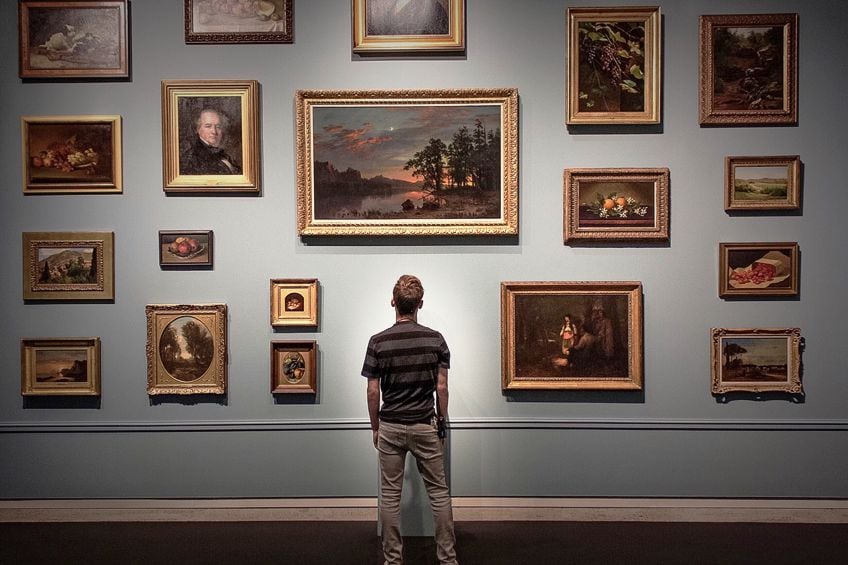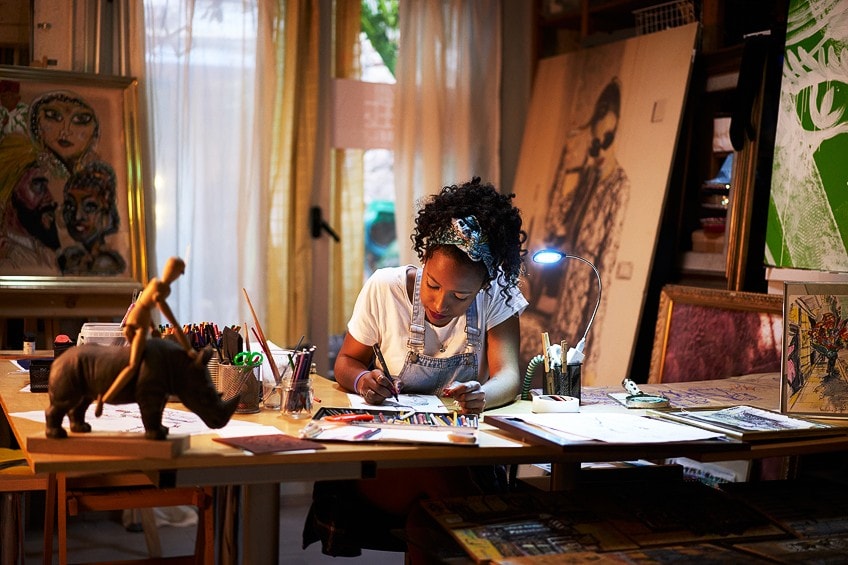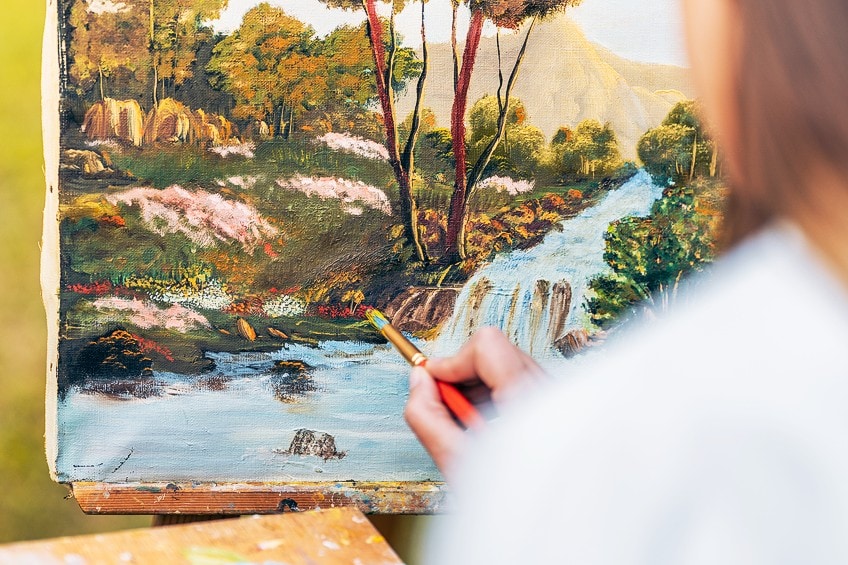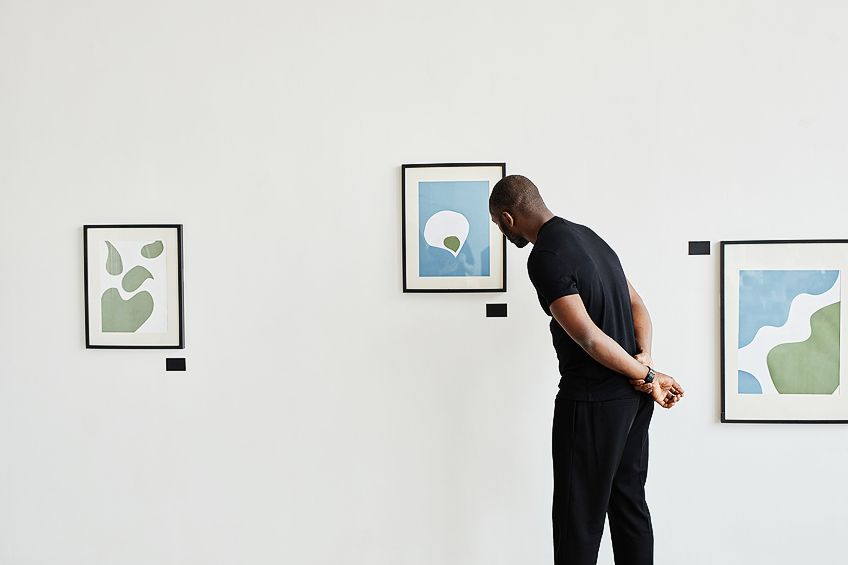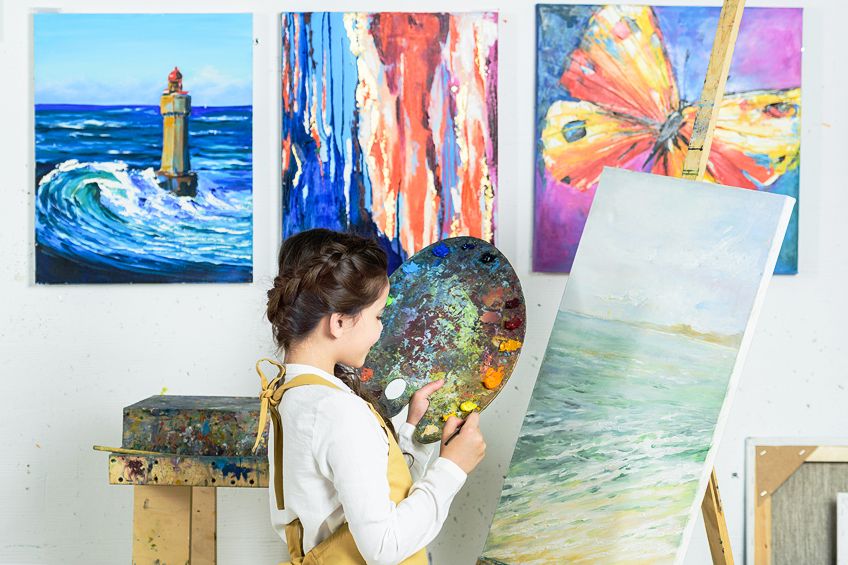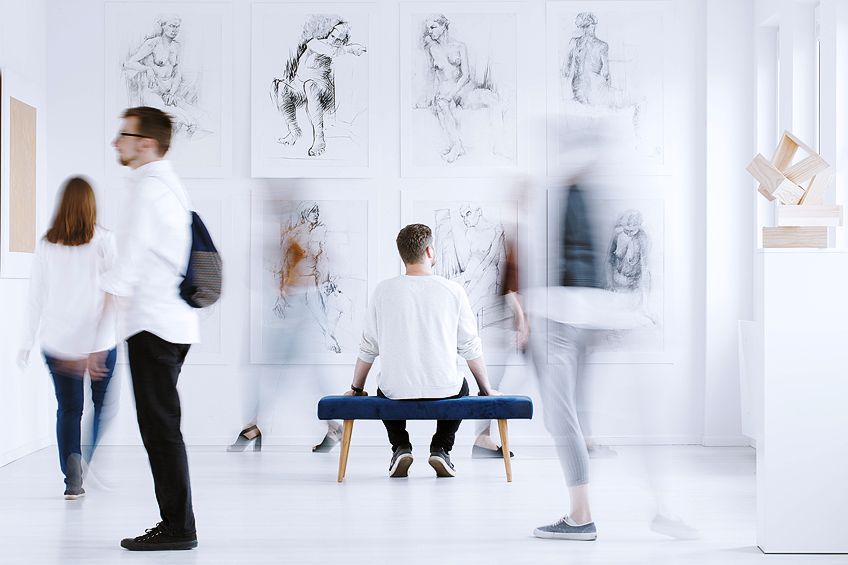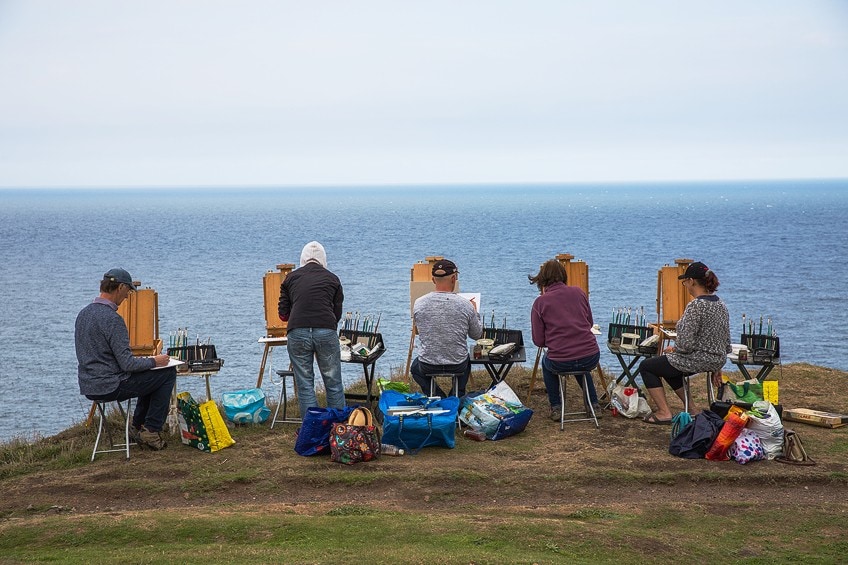Why Is Art Important? – A Look at the Importance of the Arts
There is a misunderstanding in our modern society that art is reserved for after-hours, hobbies, and the select few that choose to call themselves artists. However, art is so deeply embedded in what it means to be human that there is no way to imagine our species without the making of art. In this article, we will consider three questions in the discussion of the importance of arts in the world: “Why is art important to culture”, “what skills does art teach us?”, and “why is art important to practice in the construction of identity?”
Contents
- 1 Why Is Art Important?
- 1.1 Art Is a Visual Way of Making Something Special
- 1.2 Art Is a Way of Recording
- 1.3 Art Assists in Emotional Release
- 1.4 Art Teaches Us About Sensory Experience
- 1.5 Art Improves Visual Thinking and Metaphorical Understanding
- 1.6 Art Teaches Us New Skills
- 1.7 Art Enhances Our Lives
- 1.8 Art Is Conducive to Individuation
- 1.9 Art Creates Relationships
- 2 Frequently Asked Questions
Why Is Art Important?
“Why is art important?” is a modern question. In the past, artists had patrons that supported their practice financially, politically, and physically by offering them spaces and projects to work on. The role of the artist to document families, history, myths, and cultural stories were clear.
It was only after the invention of the camera that the importance of the arts and artists came into question. Art went through a big shift and took on a brand-new role during the 1800s.
Nowadays, we have a different understanding of the importance of art. Art is now valued in creating novel cultural products that assist in emotional processing, sensory experiences, exploration, curiosity, identity construction, and more. In this article, we will focus on a few key elements that make the practice of creating art a worthwhile project.
Art Is a Visual Way of Making Something Special
It is our instinct to create interesting and unique things with our hands. Art affords us the opportunity to make something that is not only functional, but beautiful, significant, and unique. Besides the fact that art gives us a medium to express our unique essence, it also helps us to make sense of the world. Art is therefore a way we process our subjective experience of life in a way that can be shared with others.
Big life, cultural or global events often go with shifts in art trends and styles. This exposes the role of art in documenting what is important to human lives and societies.
Art Is a Way of Recording
Art records meaning, experiences, and feelings specific to a period in our lives. The importance of art is thus linked to the personal and global timeline it documents. Even though art no longer plays the main role of documentation in our society, it still contributes to the way history is archived and revisited.
It is therefore an important tool in measuring our personal and global development.
When we think of the World Wars, it is almost impossible to not think of the great impact that they had on the development of the art world. Artists documented the impacts of global conflict and it changed the way that they used their mediums.
Art movements can have realistic documenting functions but since the rise of Modernity, it has been more concerned with documenting humans’ emotional, spiritual, and symbolic lives.
Art Assists in Emotional Release
Art-making has definite therapeutic effects and benefits as it helps us to engage with our emotions intimately while being slightly removed from them. Dancing a dance or painting a canvas about heartbreak or a point of tension in your life can create a sense of release. Further, art assists in expressing what words cannot. It deals with the abstract and subtle ways of being human.
Before we learn to connect our experiences to concepts and language, we have a preverbal experience of life. A whole part of our formative years is therefore later connected to language or not at all.
As adults, we very quickly interpret what we are feeling and going through in terms of language. But before language, there is simply the preverbal experience – whether physically, emotionally, or spiritually. Art allows us to engage with our experience without language. As made clear in The Art Therapy Sourcebook (1998) by Cathy Malchiodi, art therapy and spiritual modalities of art practice uses the preverbal brain to assist in emotional processing.
Without the tool of art, the mind can often get stuck in a habit, pattern, or trauma that does not express the full and personal truth of the matter.
Art is therefore vital in the way humans engage with their feelings. Many people become art curious when they have reached the limits of language and logic in processing difficult emotions. Artists’ art styles are often also influenced by the way they use art to transmute or meditate their feelings. When art is practiced alongside a close study of the emotional experience of the artist, it can result in a diverse and mature visual expression.
Art Teaches Us About Sensory Experience
Humans navigate the world and their lives by using various tools. Mathematics, philosophy, science, religion, and so on are all modalities through which we understand and experience the world. Besides the preverbal element art engages in, it also assists in our sensory understanding of the world. Connecting to textures, sounds, scents, and forms while making art stimulates the imagination even outside of the art-making experience.
This is a very important skill to have because the understanding and use of materials are vital in the way humans function in the world.
Artists often study and use the inherent qualities of materials. This makes them experts in using materials to craft and curate experiences of the world. The difference of choosing wooden floors instead of concrete floors in a museum that explores the concept of home can make a big difference in how the space is experienced.
Similarly, artists understand the big impact that aesthetics and color of public spaces can have on communities.
They can therefore apply their knowledge of the matter to add to feelings of inclusion, equality, accessibility, and more. This shines more light on the question, “why is art important to culture?”, it assists in the making, engaging, and breaking of collective cultures.
Art Improves Visual Thinking and Metaphorical Understanding
Making art develops visual thinking and metaphorical understanding. Visual thinking is important when we think of architecture, cartography, advertising, and so on. When considering again, “why is art important to culture?”, we see that these social phenomena influence our ways of being in the world, it changes our behavior and therefore have an impact on culture. For example, the layout of a city influences how people move, experience, and exists in the city. These influences lead to cultural products that fundamentally connect people.
Visual thinking is carnal to understand how culture will be influenced by space and economies. Art is important to the development of the visual mind and should not be overlooked in the construction of economies.
There is a reason why dictators senor art. Art has the ability to change minds and the world, as expressed by Alan Brooks in his Ted Talk, When the world is burning, is art a waste of time? The profound influence of the symbolic messages art carries is evident in any political revolution throughout history.
Art assists people in metaphorical thinking. Besides the abstract, preverbal mind engaged by art, art also has a metaphorical function in society. Humans are storytellers and some theorists believe that it is our ability to tell and collectively believe in stories that have allowed our species to evolve the way we have. Metaphors are extremely important in conveying meaning. How materials, shapes, forms, colors, sounds, textures, and so on can come to have a deeper meaning is the project of art.
The hand-in-hand nature of stories, myths, histories, narratives, and art is clear when we look at key cultural shifts throughout history. For example, the move from religion to logic as the main framework to understand the world is what brought the Enlightenment to Europe. One story (that of religion) was shifted from focus in favor of the story of science and reason. This largely went parallel with artists depicting this shift through the metaphors, subject matter, and medium used in their art.
Art, therefore, plays a core role in how we understand and make sense of the world around us.
Art Teaches Us New Skills
Art-making encourages risk-taking and experimentation. These skills are what sets someone apart from others as a creative person and afford them creative problem-solving abilities. Curiosity is at the center of creative practice. This requires bravery which often spills out into the rest of our lives. In a world that is constantly optimizing jobs, humans will have to craft a new space for themselves in the professional realm.
The rise of optimization is giving our species a chance to return to a more relaxed life. When the mind is relaxed and the body is not overworked, creativity can come out to play.
However, the development of Artificial Intelligence in a world that struggles with overpopulation, pollution, and polarization requires creative solutions to connect the masses of people. This is where our creative skills, courage, and out-of-the-box thinking are going to give us the same purpose that we currently get from our professions. Visual arts promote qualities like harmony, grace, beauty, balance, and so on. This is why art can help us to think through global conflict and disharmony in constructive ways.
Once we use the metaphorical, preverbal, and symbolic modalities of art to process complex issues, it can lead to new insights and productive action.
Art Enhances Our Lives
When practicing and engaging with art becomes part of your daily life it can transform inner conflict and feelings of stress. This makes us nicer people to be around. If you make sure that your art practice is not just another place where you chastise yourself with harsh criticism, it can promote compassionate ways of engaging with the world as well.
Making artworks is an inherently unique process. It involves releasing control and being flexible. Therefore, making art challenges comparison and perfectionism.
Most art private art collectors that buy art for pleasure instead of investment, reflect that the function of art in their lives is to transport them into other worlds. Making art and looking at art can act as tool in the process of transcendence because it allows us to access the mysterious, imaginative, and other-worldly nature of reality. Becoming rigid in our living patterns, relationships and mental function can be a by-product of prioritizing comfort and work. Making art can put us outside of our comfort zones which is a helpful exercise in a world that is ever-changing.
Making art can help us reach parts of ourselves that are possibly not satisfied by work, family, friends, and so on. It becomes a deeply personal space where you learn to meditate on your emotions, regulate stress, and open your mind up to more than just structure, logic, and linearity. Once you practice creativity regularly, you can take the insights reached around playing, releasing control, exploration, curiosity, and non-judgmental thinking into your life at large.
Art helps us discover new meanings in life as it has a larger, existential purpose. When a person makes art, it affirms that they exist or existed. It, therefore, communicates the way that person understood and engaged with life. We forget that reality is experienced subjectively. When you make art this subject nature of our lives becomes very apart.
Retrospectively, the things a specific artist valued throughout their lives can be tracked. Art can give us a lot of perspectives, which gives us the opportunity to assess and change our values.
The importance of the arts further involves our connection with our inner child, which is a very important part of living a full life. Adults often deny or neglect the importance of play in their lives. This is here where art can allow us to connect to the parts of us that are still like children. It brings into focus and activates practices that are often abandoned as only important to children.
Art Is Conducive to Individuation
Art-making is a fun practice that connects us to our intuition, energizes us, promotes curiosity, makes us playful, and helps us formulate our identity in the process. Social media and education can often lead to a group mentality.
Because your artistic style and expression are not the same as anyone else on earth, it communicates your perspective on life.
If you are someone that has a monotonous schedule and professional life it can feel like nothing is setting you apart from other individuals, but art emphasizes how you are different. Pondering the things you want to paint, draw, or capture can put you into contact with your perspective of being human.
Creating and considering your art style can also allow you to communicate your identity to the world outside of you.
Art Creates Relationships
Besides the important function of art in identity construction and individuation, it gives us an essential platform for connection. Studies have shown that we are more communicative after an art-making experience. Because emotions are mediated and stress is released through art activities, it makes it easier for people to talk about what is currently going on in their lives.
Art can help us feel grounded and embodied and therefore makes it easier for us to connect to other people.
Art gives us a way to talk about difficult topics. Through medium use, art style, and curation it opens up multiple ways to interpret the concepts and subject matter the art engages. Other people relating to your artworks give to a feedback system of individuals witnessing your growth and process. The facilitator in workshop and art therapy instances is a witness to your progress and healing. They can encourage you to explore more and motivate you to go deeper into your research and subject.
By building an art community around your practice, you can experience acceptance and diversity in perspective.
Working in groups on art projects provides new ways of seeing and inspiration as collaboration requires healthy communication. Making art and sharing it with the world necessitates vulnerability. The deeply personal and emotional nature of art makes it hard to share sometimes. But when you embody this vulnerability through speaking about and showing your work, it can create powerful connections with other people.
Many people in the world might not understand and value art, but it is the project of each artist to make sense for themselves why they are drawn to art. When you make artworks with an open heart to connect to other people, it resonates with the inherent importance of art out to the world. This resonance attracts like-minded people that can create a feeling of community for practicing artists. The importance of the arts is also clear in the fact that humans never stop making it, no matter how difficult their lives. Without art, we will not have entertainment and the stories we tell will die and lose their function. Creativity inspires new ways of being and will help us to adjust to a fast-changing world. It is therefore vital for each person to explore their unique expression and, hopefully, add to the history of magical products created by our species.
Frequently Asked Questions
Why Is Art Important If I Am Not Earning Money from It?
The ways we earn money can often be stressful and put a strain on our bodies. Art can assist with anxiety and stress when practiced after work, as it winds down the mind and helps the body relax. Going to workshops and classes over weekends and holidays can bring diversity to your life and connect you to people outside of work. It is sometimes good to have an area in your life where outcome, income, and achievement is not the main goal. Art can be a wonderful exercise in non-linear thinking and experimentation. That being said, it is possible to make a living out of making art. If you are an artist that feels discouraged by the fact that you are not selling work, remember that consistency and audacity often make a successful artist. If you keep working, sharing your work, and courageously frame yourself as an artist, someone might take notice. Do not give up!
Why Is Art Importance to Culture?
Art documents and reflects different cultures. This makes it easier for people all around the world to engage with and understand other cultures. Art captures the philosophical, spiritual, and value framework of a culture. This makes cultural elements easier to digest. Art, therefore, also tracks cultural changes and offers a multi-media history of mankind.
Is the Importance of the Arts Understood by the World Today?
The world today encourages us to move faster and do more, whereas art encourages us to slow down and zone in. Even if people around the world do not understand the value art brings to their lives, the influence is still there. During times of hardship, people turn to art to make sense of and process what is going on around them. This exposes the fact that art will always be part of our world. The world today is driven by industries that use art to communicate their message. This does not necessarily mean that artists around the world are fairly compensated for their contribution to the world of advertising and entertainment. But it at least shows how integrated art is in all of our lives.
Nicolene Burger, a South African multimedia artist and creative consultant, specializes in oil painting and performance art. She earned her BA in Visual Arts from Stellenbosch University in 2017. Nicolene’s artistic journey includes exhibitions in South Korea, participation in the 2019 ICA Live Art Workshop, and solo exhibitions. She is currently pursuing a practice-based master’s degree in theater and performance. Nicolene focuses on fostering sustainable creative practices and offers coaching sessions for fellow artists, emphasizing the profound communicative power of art for healing and connection. Nicolene writes blog posts on art history for artfilemagazine with a focus on famous artists and contemporary art.
Learn more about Nicolene Burger and about us.
Cite this Article
Nicolene, Burger, “Why Is Art Important? – A Look at the Importance of the Arts.” artfilemagazine – Your Online Art Source. August 1, 2022. URL: https://artfilemagazine.com/why-is-art-important/
Burger, N. (2022, 1 August). Why Is Art Important? – A Look at the Importance of the Arts. artfilemagazine – Your Online Art Source. https://artfilemagazine.com/why-is-art-important/
Burger, Nicolene. “Why Is Art Important? – A Look at the Importance of the Arts.” artfilemagazine – Your Online Art Source, August 1, 2022. https://artfilemagazine.com/why-is-art-important/.



